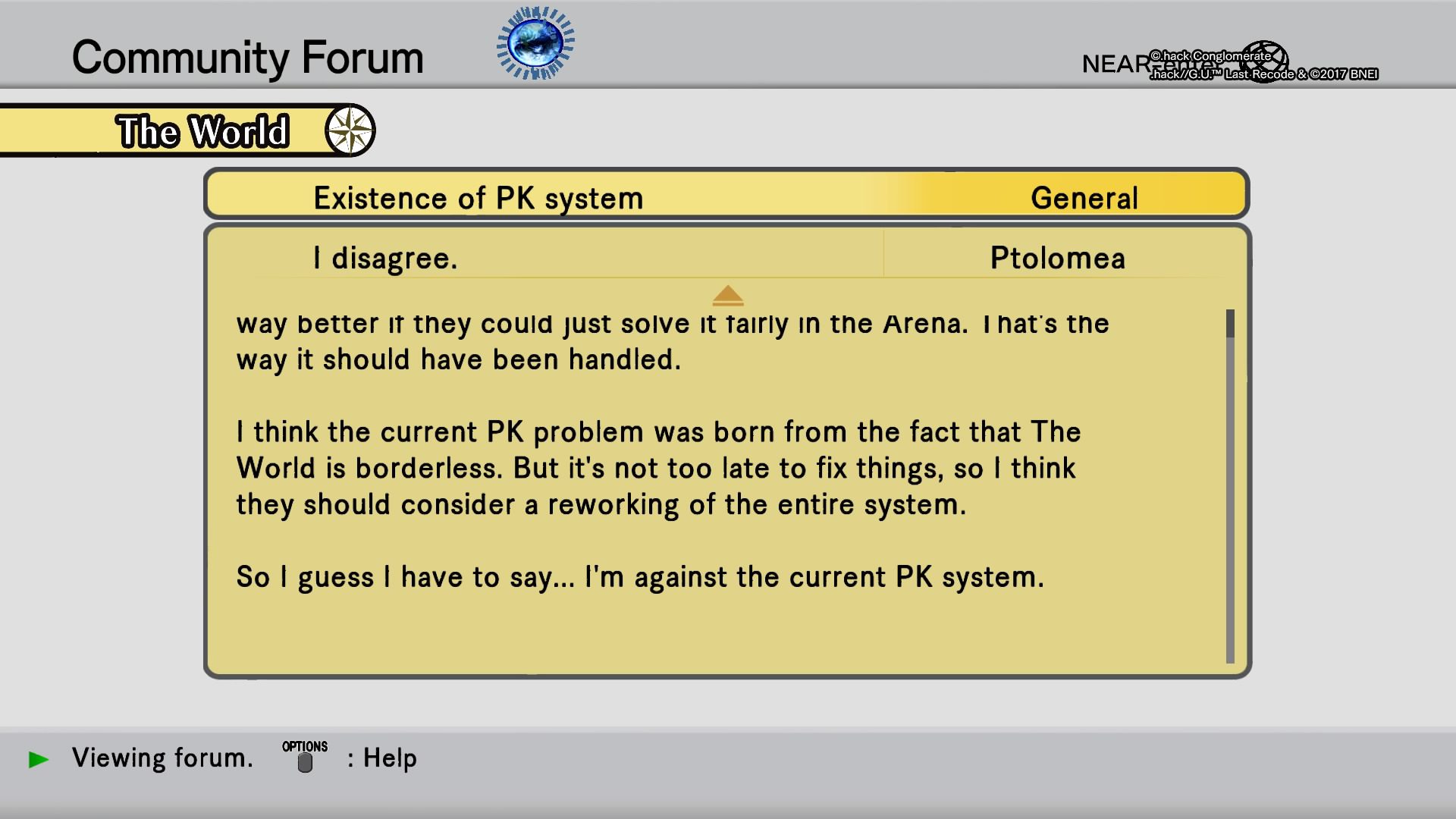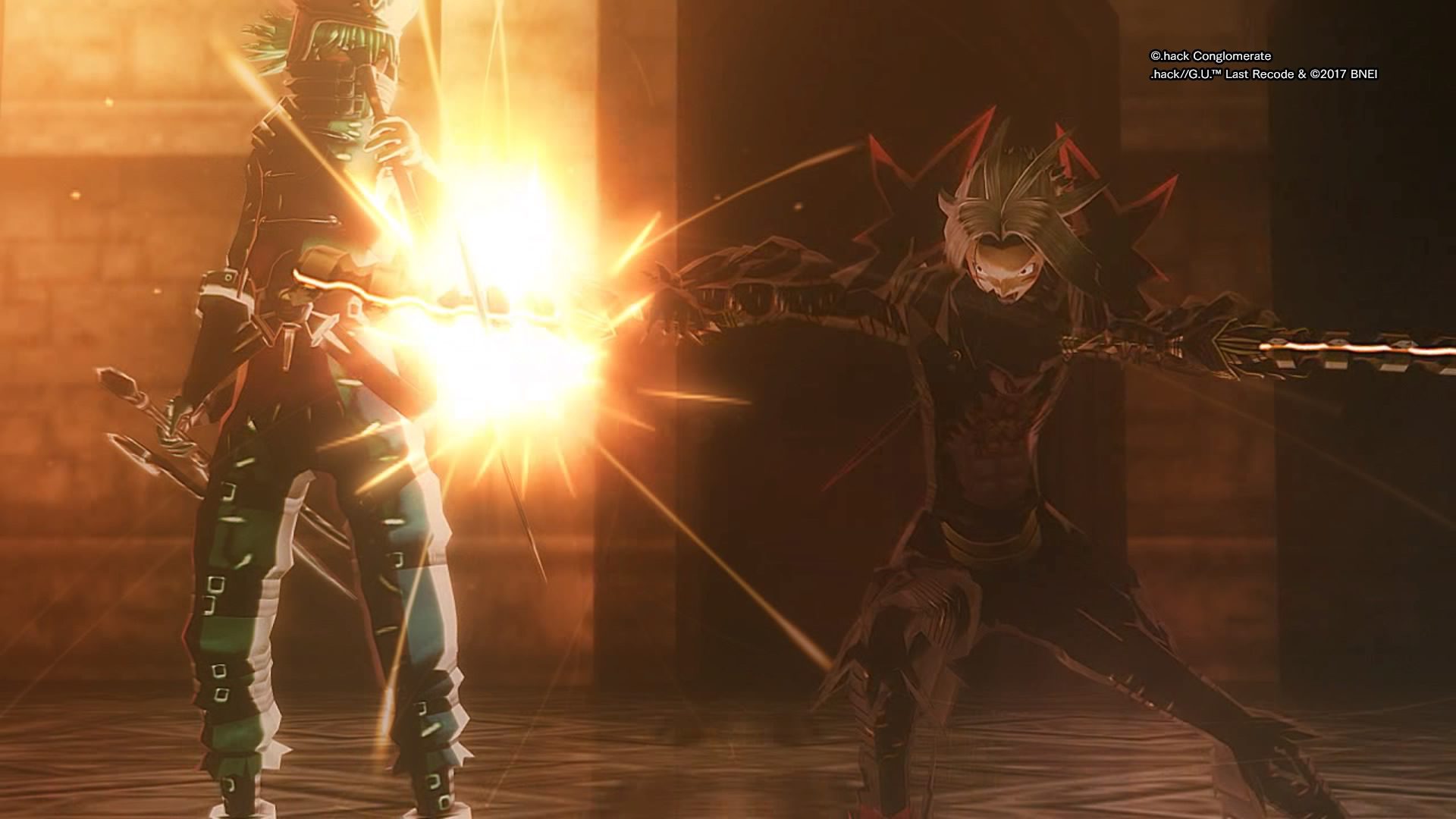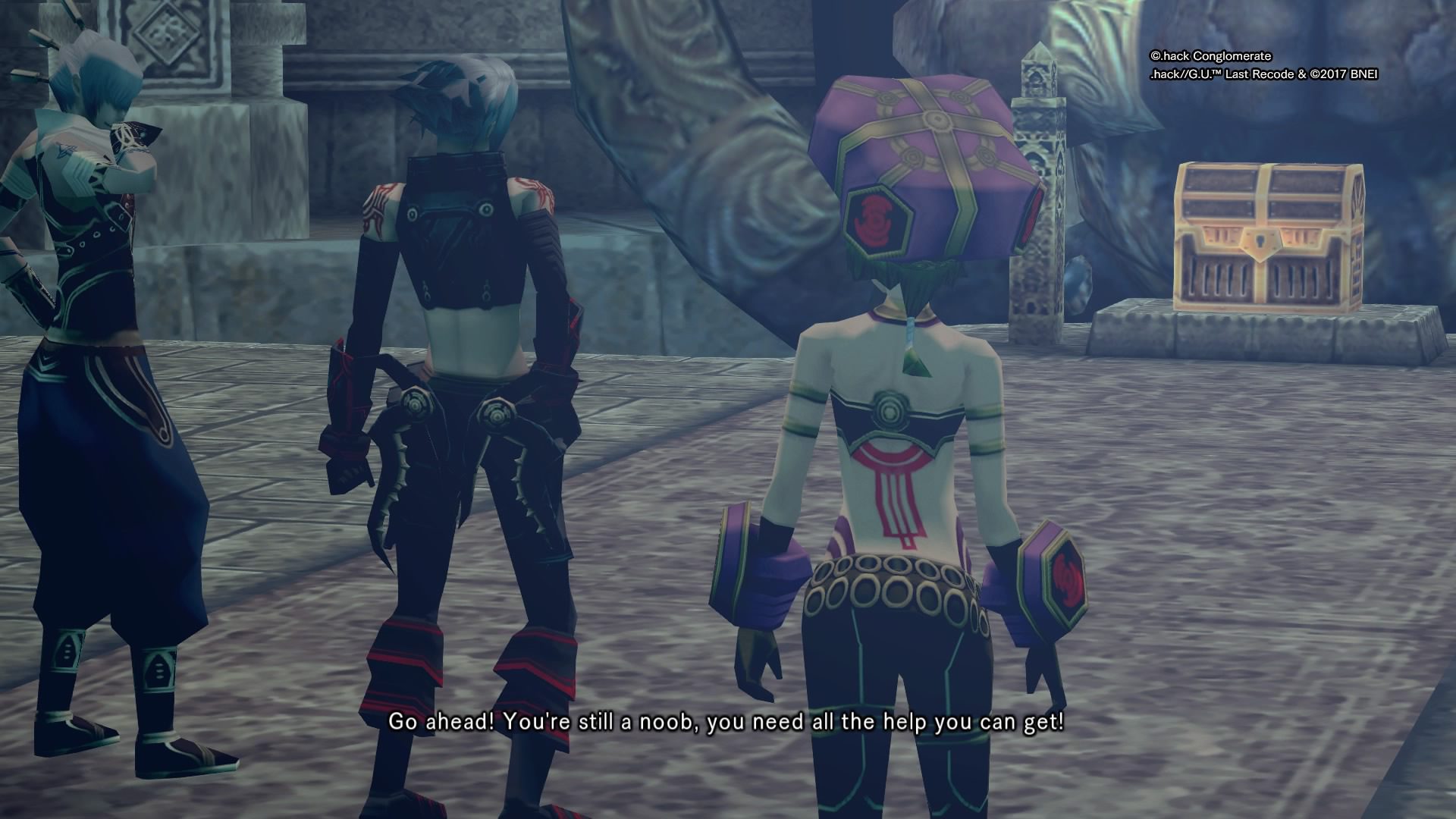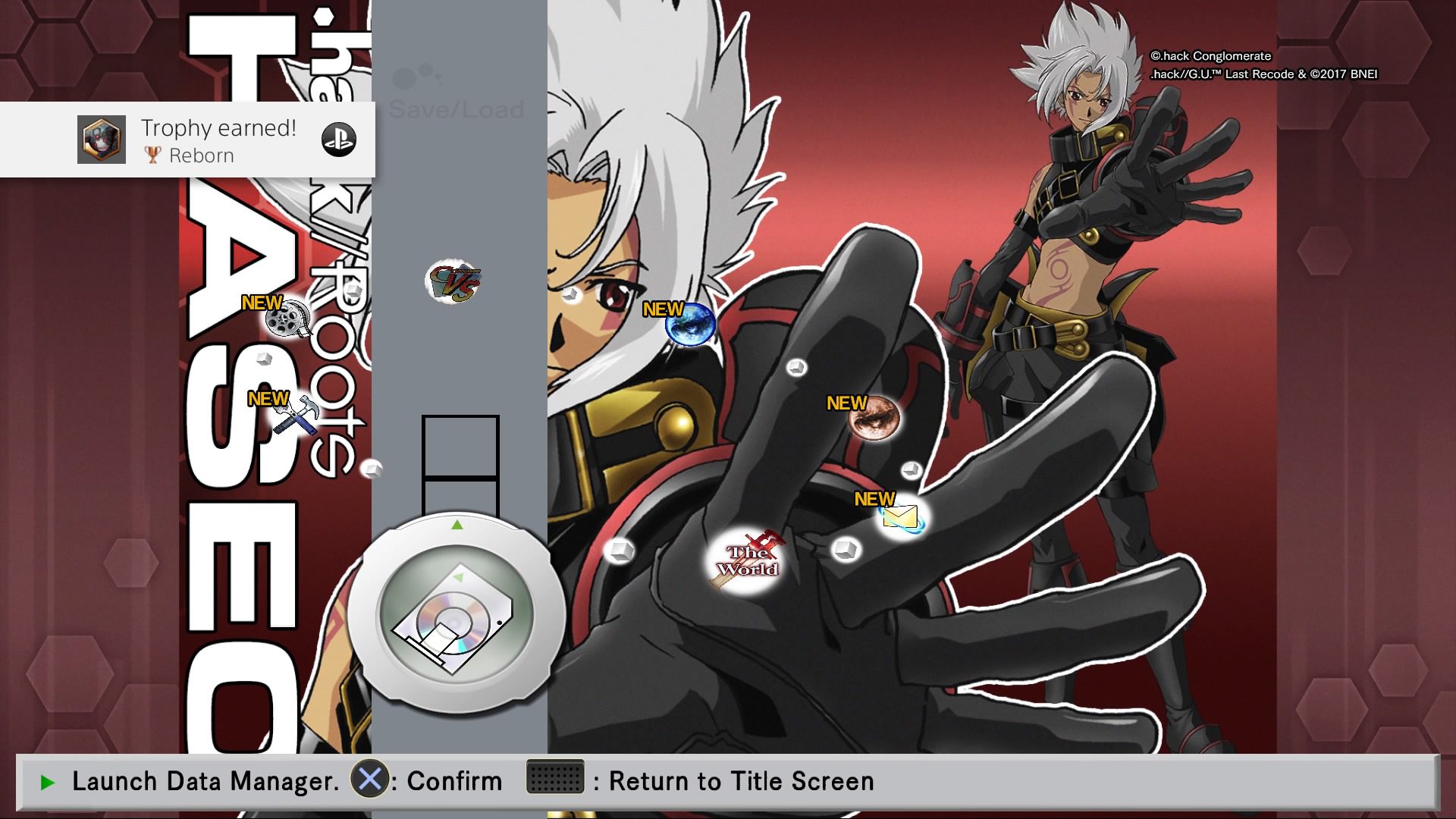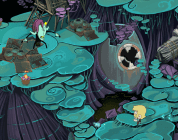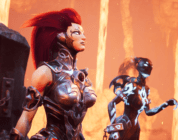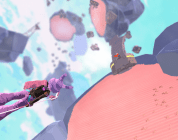When I was a teen the PS2 was one of my favorite systems, a system filled with tons of games that were fairly cheaper than other games. I was also subscribed to a magazine that had a free demo disc packed in during those years. On one of those demos was a brief look at .hack//G.U. Vol. 1//Rebirth and I was pretty hooked on the basic combat and the greatswords with chainsaw blades. When it was released, I picked it up and played all the way through in a week or so. I even played through it again and got my step brother to play so I had someone to talk to about it. I also watched the prequel anime series .hack//Roots, but we never picked up the other volumes for whatever reason. Now the series has returned with a little extra in .hack//G.U. Last Recode, a remaster of sorts on the PS4.
For simplicity sake, I’ll be referring to the collection as Last Recode and each game in that collection as Volume 1,2,3, or 4. Makes things easier to type out. . .
That aside, I hadn’t thought about this series in over ten years. The anime had always been a fascination to me and I had played the original series briefly, but I never fully dived in. This is also one of the few games that I easily put almost 100 hours into, only to be left wanting more. However, this isn’t a JRPG that I can recommend to all players as there are some rough edges.
For starters, Last Recode is a ton of value for the consumer. Fifty dollars buys four games (well three and a half, more on that later) with each one having about 30 hours of story and maybe 20 more hours of extras that could be done. For the most part, I blazed through each game, especially since I was so familiar with the first one. However, there is extra quests and the daunting Book of 1000 to achieve for those looking to truly to complete each game.
So, to summarize what .hack// G.U. even is, this is a game with a meta narrative with character progression that can be transferred to each game, steadily improving that character. Each character is playing an MMORPG called “The World”, a game that sparked a disaster called the “2nd Network Crisis” as well as putting many players in a coma. Seven years later, a new version of The World has launched and has more players than ever. When a mysterious player called Tri-Edge player kills a close friend of the main character, that character’s player goes into a coma and things start to repeat.
Players take on the role of Haseo, a powerful PKK (a player killer killer) who takes out those that kill other players. He chases Tri-Edge to avenge his friend Shino, hoping to bring her back from her coma. When he finally meets Tri-Edge, he is swiftly defeated and hit with Data Drain, a powerful ability that resets Haseo’s level to 1. From here Haseo must start over, still chasing Tri-Edge and searching for answers. Along the way he will have to climb the ranks in the game’s arena, confront a great power within his Player Character, and make friends.
The general plot of Last Recode is fairly complex, but presented poorly. All of the action either takes place in The World or on Haseo’s OS. Most of the plot is moved through simply presented cutscenes, which can sometimes last forever with basic writing that could’ve used a couple more editors. Other than that, a lot of triggers to start the next objective come from answering emails or sometimes checking through forums. This is simulated exceptionally well, as there are fan art forums, tips, and an entire card game built into the OS. Playing Last Recode feels exactly like playing a game within a game.
The combat system is much faster than the first series of games, focusing more on combos and activating special attacks. Beating up an opponent can trigger a moment of weakness, allowing Haseo and his team a chance to do extra damage with a Rengeki. Successful combat relies on timing, positioning, and tossing out as much damage as possible. Taking a closer look at the combat can lead to canceling animations to maximize output and knowing what attacks will interrupt enemy animations.
As one works through each Volume, Haseo gets Job Extensions that add extra abilities to his character. He starts out only able to use daggers, but by the end he is able to switch to between four different weapons. The combat does get repetitive, but with the extra attacks it makes it just enjoyable enough to keep going. Although, those hoping to sling spells will have less options as there is no way to map those spells to the Skill Trigger for hot keys. Adding that in would have added even more options and just streamline things a bit more.
Most of the game is balanced between visiting town servers and going through dungeons. Dungeons are accessible through a password system of three words, which can activate some properties like more treasure or tougher monsters, but any mission required is bookmarked. Extra dungeon words can also be found on the forums or as quests.
Unfortunately, these dungeons are incredibly simple with the theming only having a handful of variety across all four games. Monsters are a little more varied, but their general designs are also repeated. This is coupled with three arenas to go through, each with their own dramas. Sadly, a lot of Last Recode are those arenas, but luckily the actual arena combat is pretty fun. This is due to the opponents being able to counter Rengeki attacks, making for a more heated exchange. That said leveling up or upgrading equipment can turn the tide of battle.
Grinding is not really present in Last Recode and the game’s design actually works against that practice. Experience points are gained in relation to the level of the enemies being fought, which means that killing the same weak opponents will often grant so little experience that it makes leveling takes forever. The best strategy is to optimize the combat mechanics, so that Haseo and friends can tackle foes a few levels higher than they are. This provides a solid chunk of experience and keeps the game challenging enough to stay engaged.
The humdrum of the combat is broken up with Avatar Battles. That power inside of Haseo’s character I mentioned before is Skeith, a powerful reaper entity that erupts from his form to take down the game’s problematic bugs called Aida. Aida is likely a part of the grander scheme of things, so Haseo agrees to fight them with his new power.
These battles are more arcade feeling, where players will have to weaken their enemy with slashes and shots, dodging lasers and pulling off a Data Drain in the end. These battles have been rebalanced a bit to make them easier (they were kind of a chore before) but now they fit more on the spectacle side. Personally, I love the design of each of the Avatars and using Skeith just looks awesome.
Now, let’s go over the newest Volume just a bit. The fourth Volume is a new episode added into Last Recode, which is more of a wrap-up to make everything more of a happy ending and as an excuse for Haseo to get another cool redesign. For those who have already played the main trilogy, this episode adds some awesome attacks, but the combat involves the same enemies and the same tired dungeon design. Although, there are some hints at the future of the series, so it’s worth taking the four or five hours to go through it. Just don’t expect to be floored with the narrative of this extra episode.
All in all, I truly missed this series. Sure the characters aren’t as complex as I would like, but the overall concepts are interesting enough to keep me intrigued. There is a genuine understanding of MMO culture and tropes that makes it easy to relate to anyone familiar with those games. It’s not perfect, but Last Recode is definitely the best way to play this series, especially considering how expensive the PS2 games can be.
Last Recode in my opinion is worth trying out and I do hope that Namco Bandai consider doing something similar for the first series, as those too are extremely expensive and were never released digitally. I would also like to see the PSP series get translated and from there maybe even a new approach to bring us back into The World.

